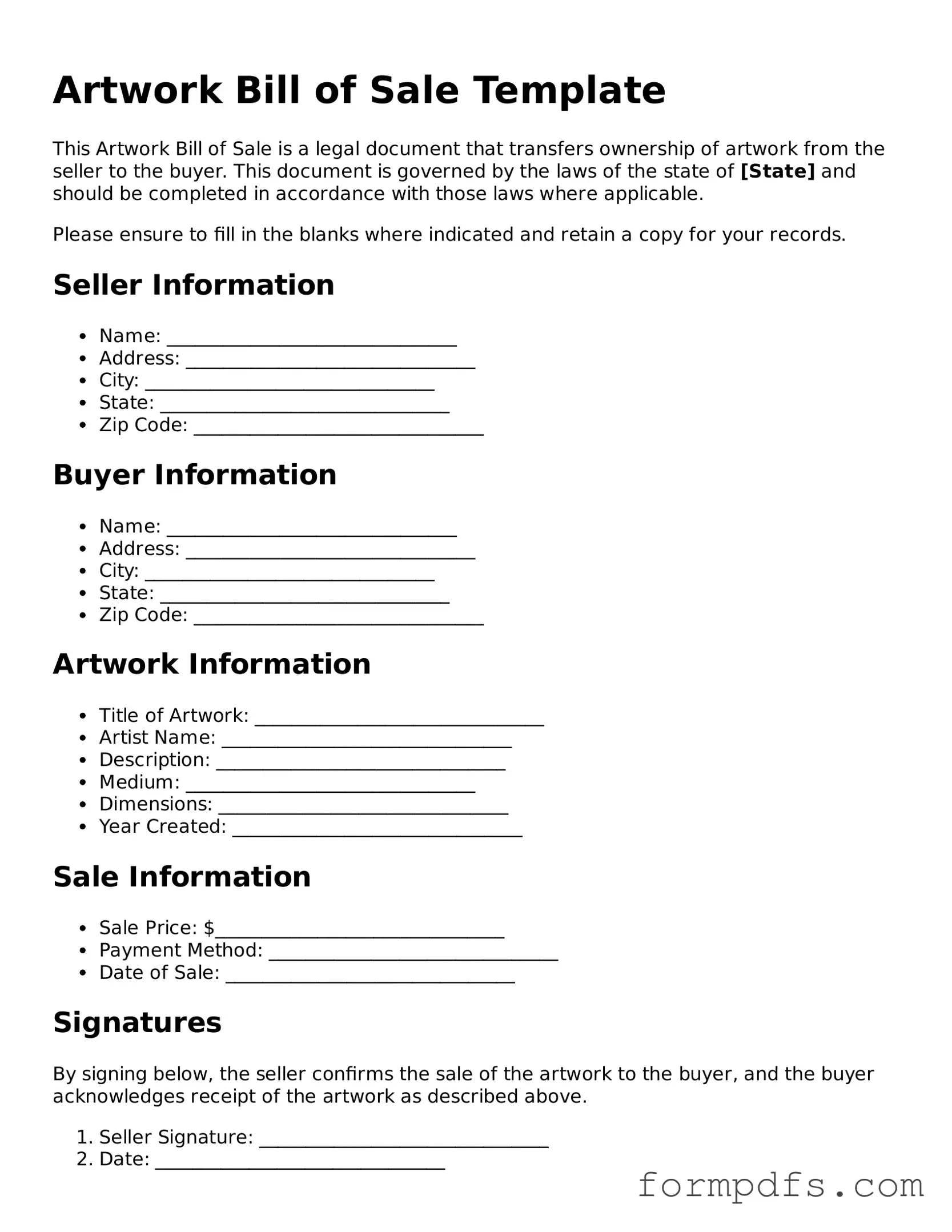An Artwork Bill of Sale is a legal document that transfers ownership of a piece of artwork from the seller to the buyer. This form serves as proof of the transaction and outlines the details of the sale, including the parties involved, the artwork description, and the sale price.
What information is typically included in the Artwork Bill of Sale?
The form generally includes the names and contact information of both the buyer and seller, a detailed description of the artwork (including title, artist, medium, and dimensions), the sale price, the date of the transaction, and any specific terms or conditions related to the sale.
Is the Artwork Bill of Sale legally binding?
Yes, an Artwork Bill of Sale is legally binding as long as it is properly completed and signed by both parties. It creates a record of the transaction and can be enforced in court if necessary, provided all legal requirements are met.
Do I need to have the Artwork Bill of Sale notarized?
Notarization is not typically required for an Artwork Bill of Sale, but it can add an extra layer of authenticity and security to the document. If either party feels it necessary, they can choose to have the document notarized.
Can I create my own Artwork Bill of Sale?
Yes, you can create your own Artwork Bill of Sale. However, it is crucial to ensure that it includes all necessary information and complies with any applicable laws. Using a template can help ensure that you cover all essential elements.
What if the artwork is damaged after the sale?
Once the Artwork Bill of Sale is signed and the transaction is complete, the seller is generally no longer responsible for the artwork. However, if the sale included specific terms regarding the condition of the artwork, those terms may still apply.
Can the Artwork Bill of Sale be used for online transactions?
Yes, the Artwork Bill of Sale can be used for online transactions. Both parties can sign the document electronically, and it can be sent via email or other digital means. It is advisable to keep copies for record-keeping purposes.
What should I do if I lose my Artwork Bill of Sale?
If you lose your Artwork Bill of Sale, it is important to try to obtain a duplicate from the other party if possible. If that is not feasible, keeping a record of the transaction details, including any correspondence related to the sale, can help establish proof of ownership.
Is there a difference between an Artwork Bill of Sale and an invoice?
Yes, an Artwork Bill of Sale and an invoice serve different purposes. An invoice is a request for payment and may not necessarily indicate ownership transfer. In contrast, an Artwork Bill of Sale confirms the transfer of ownership and serves as a legal record of the transaction.
